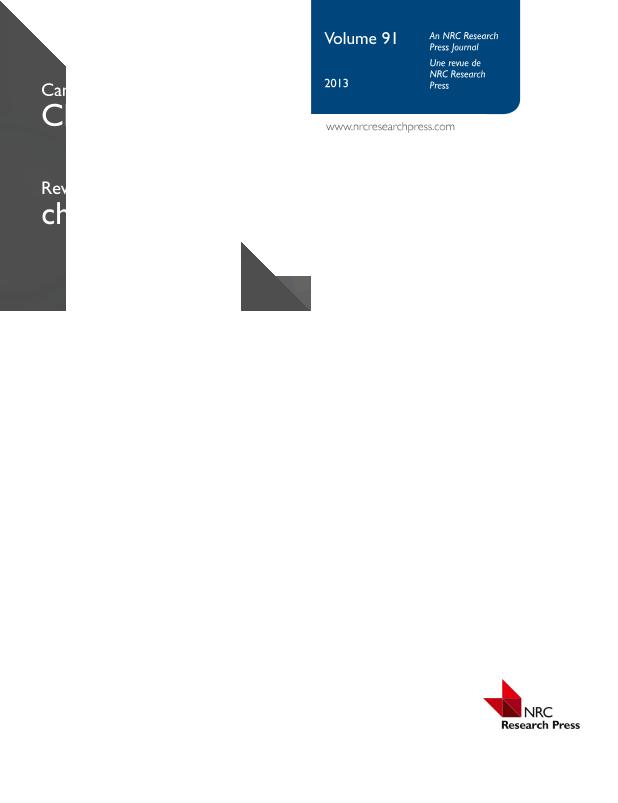Artículo
Spectroscopic studies of vanadium biosorption on different types of carbohydrate biomass
Garcia, Jousy; González, Juan Carlos; Frascaroli, María Inés; García, Silvia Isabel; Blanes, Patricia Silvia; Correia, Isabel; Costa Pessoa, João; Sala, Luis Federico

Fecha de publicación:
03/2013
Editorial:
Canadian Science Publishing
Revista:
Canadian Journal of Chemistry
ISSN:
0008-4042
Idioma:
Inglés
Tipo de recurso:
Artículo publicado
Clasificación temática:
Resumen
The biosorption potential of different types of carbohydrate biomass is investigated to evaluate their application to purify water contaminated by vanadium in environmentally relevant oxidation states (VIV and VV). Spectroscopic studies were done by electron paramagnetic resonance (EPR), vanadium nuclear magnetic resonance (51V NMR), circular dichroism (CD), and electronic absorption in the visible range (vis). Both d-galacturonic and d-glucuronic acids are major components of plant cellular wall polysaccharides. The interaction of VIV with the model ligands d-galacturonic and d-glucuronic acids showed that complexation starts at low pH values (pH 3) and that carboxylate and sugar–OH groups, as well as water molecules, are involved in the coordination. At pH > 4.5, coordination promotes the sugar–OH deprotonation and new species form with the ligand chelating the metal ion via oxygen atoms of carboxylate and of adjacent sugar–O− donors. The studies with pectin and citric acid show the ability of both compounds to partially reduce VV to VIV in solution and the EPR parameters suggest coordination of carboxylate, sugar–OH, and water molecules. The interaction of VV with biomass from different sources shows that grapefruit, orange peel, and plane tree fruit are the most suitable candidates for the biosorption of vanadium. Studies with VV and grapefruit (or the grainless stalk of corn) indicate that the reduction takes place at the “surface” of the solid. EPR studies on the interaction of VIV with different carbohydrate biomass show their ability to complex high amounts of VIV. We propose that the biosorption mechanism, when the biomass is in contact with VV species, involves sorption, reduction, and retention at the surface level of VIV coordinated by oxygen donors of the biomass. When the interaction starts with VIV, the main process just involves the uptake of the metal ion at the surface level.
Archivos asociados
Licencia
Identificadores
Colecciones
Articulos(CCT - ROSARIO)
Articulos de CTRO.CIENTIFICO TECNOL.CONICET - ROSARIO
Articulos de CTRO.CIENTIFICO TECNOL.CONICET - ROSARIO
Articulos(IQUIR)
Articulos de INST.DE QUIMICA ROSARIO
Articulos de INST.DE QUIMICA ROSARIO
Citación
Garcia, Jousy; González, Juan Carlos; Frascaroli, María Inés; García, Silvia Isabel; Blanes, Patricia Silvia; et al.; Spectroscopic studies of vanadium biosorption on different types of carbohydrate biomass; Canadian Science Publishing; Canadian Journal of Chemistry; 91; 3; 3-2013; 186-195
Compartir
Altmétricas



